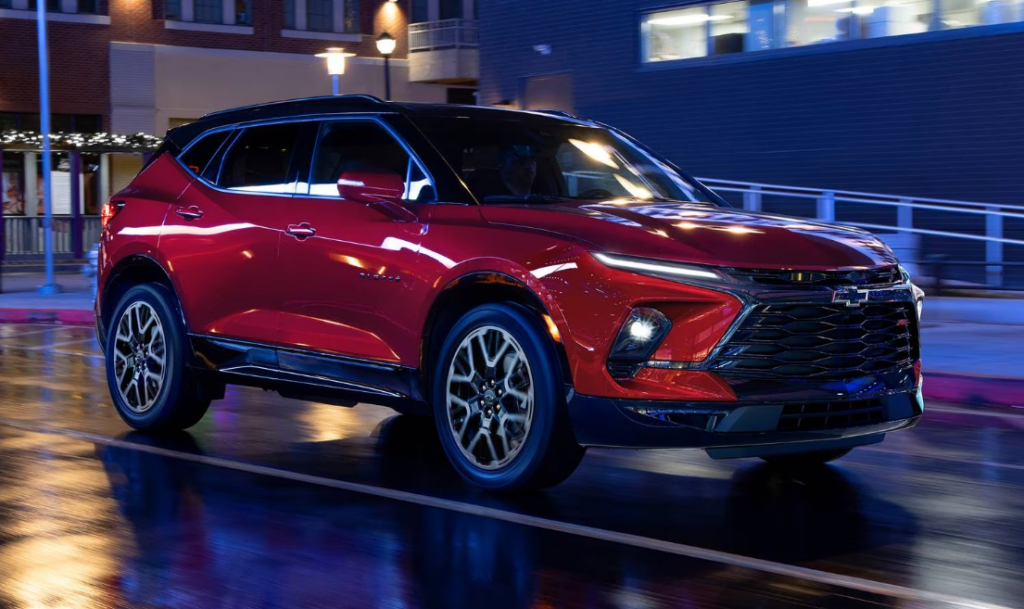
Overview
The 2024 Chevrolet Blazer, a 2-row midsize SUV, boasts Camaro-inspired styling, agile handling, and intuitive infotainment technology. With pricing starting at $35,400, it offers a compelling package for SUV enthusiasts. Feedback from our readers underscores the Blazer’s reputation as a spacious, sporty, and attractive 5-person midsize SUV, a sentiment we wholeheartedly share. Its user-friendly 10.2-inch touchscreen infotainment system stands out as one of the industry’s most intuitive. Despite being six years old, the current generation continues to impress with its striking design and exhilarating performance. While competitors like the Ford Edge and Honda Passport may offer more cargo space, the Blazer compensates with generous elbow and legroom in both rows of seating. In a fiercely competitive midsize SUV segment, the 2024 Chevy Blazer remains a standout, commanding attention, admiration, and relevance.
What’s New for 2024?
For the 2024 model year, aside from introducing a couple of new exterior colors, the most significant update is the inclusion of heated front seats as standard across all trim levels. Additionally, the 2024 Chevrolet Blazer EV makes its debut, expanding the lineup to offer an electric variant.
2024 Chevrolet Blazer Models and Pricing
The 2024 Chevrolet Blazer kicks off at $35,400, marking one of the segment’s more competitive starting prices, especially for the entry-level 2LT trim. At the pinnacle of the Blazer’s trim hierarchy sits the Premier grade, commanding $42,800. Chevy provides the option for all-wheel drive (AWD) across all trims for an additional $2,700. Opting for the V6 engine is a $500 add-on for the 3LT and Premier trims, while it comes standard in the RS trim.
| 2024 Chevrolet Blazer | MSRP |
| Blazer 2LT | $35,400 |
| Blazer 3LT | $39,300 |
| Blazer RS | $42,800 |
| Blazer Premium | $42,800 |
Roomy Cabin
Drawing inspiration from the Camaro, the interior design of the Blazer incorporates some cues from the iconic sports car, albeit with a more practical and family-friendly approach. While rear seat space and cargo area surpass those of the smaller Chevy Equinox, some rivals in the midsize SUV class, such as the Hyundai Santa Fe, offer more rear-seat legroom.
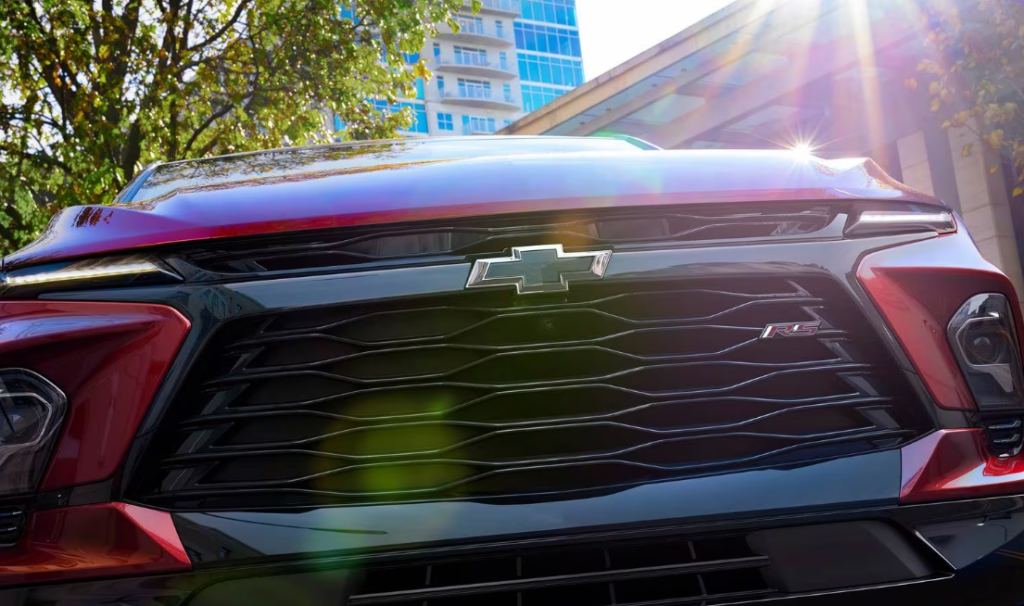
Nevertheless, with 39.6 inches of rear legroom, the Blazer outperforms most competitors in its class. The rear-seat space is generally comfortable, although taller passengers may find headroom slightly restricted in models with a sunroof.
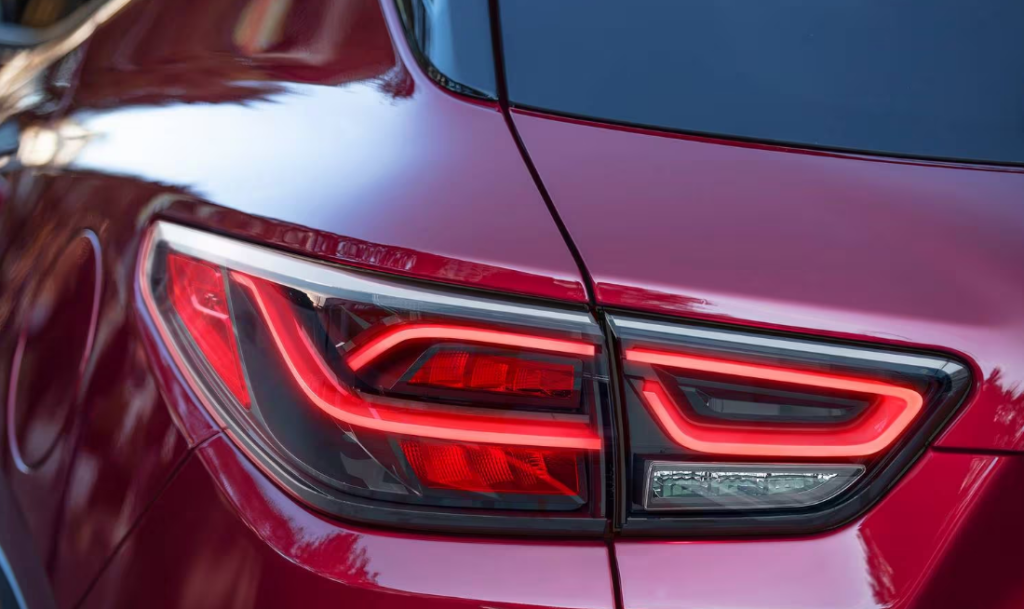
Regrettably, the ample passenger space comes at the expense of cargo room, with the Blazer offering 30.5 cubic feet of cargo space behind the second-row seat, ranking near the bottom of its class. In comparison, competitors like the Ford Edge and Honda Passport provide more generous cargo capacities, with 39.2 and 41.2 cubic feet, respectively.
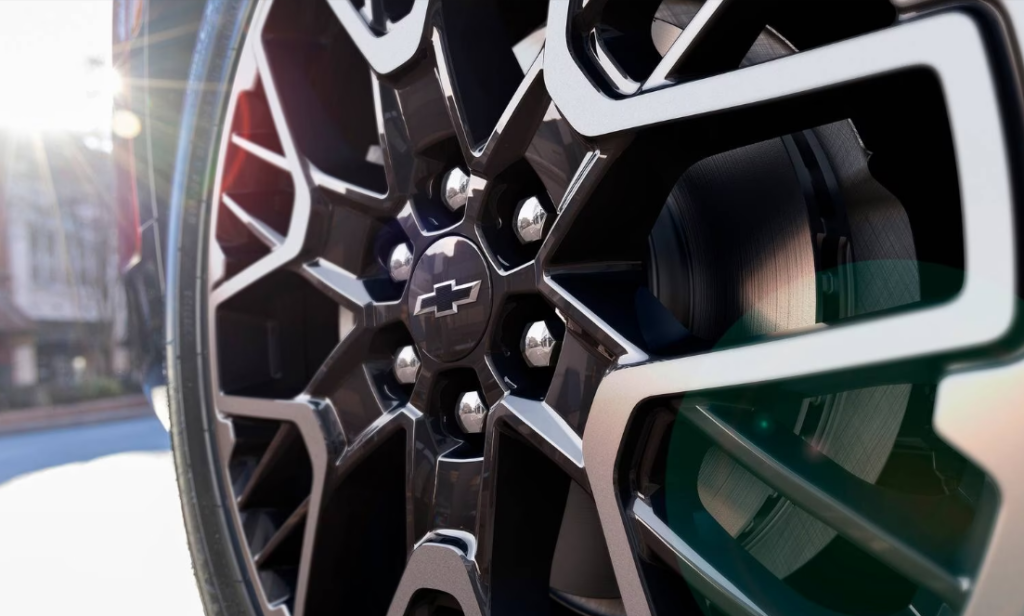
At the front, the 10.2-inch infotainment touchscreen stands prominently upright, enhancing ease of use and accessibility. The intuitive infotainment system contributes to a seamless user experience. The sporty RS trim also features an 8-inch digital driver’s instrument cluster, a feature shared with the Premier model. Overall, the cabin of the Blazer impresses, although opting for upper trims may lead buyers to consider alternatives like the Honda Pilot or Hyundai Santa Fe for more upscale furnishings.
Crowd-Pleasing Exterior
In the realm of mid-size SUVs, the Chevrolet Blazer reigns supreme with its unmistakably aggressive and sporty exterior design.

Boasting bold lines, muscular contours, and a commanding presence on the road, the Blazer exudes an aura of confidence and athleticism that captivates onlookers.

It’s no surprise that owners consistently rave about its striking appearance, often citing it as one of the standout features of the vehicle.
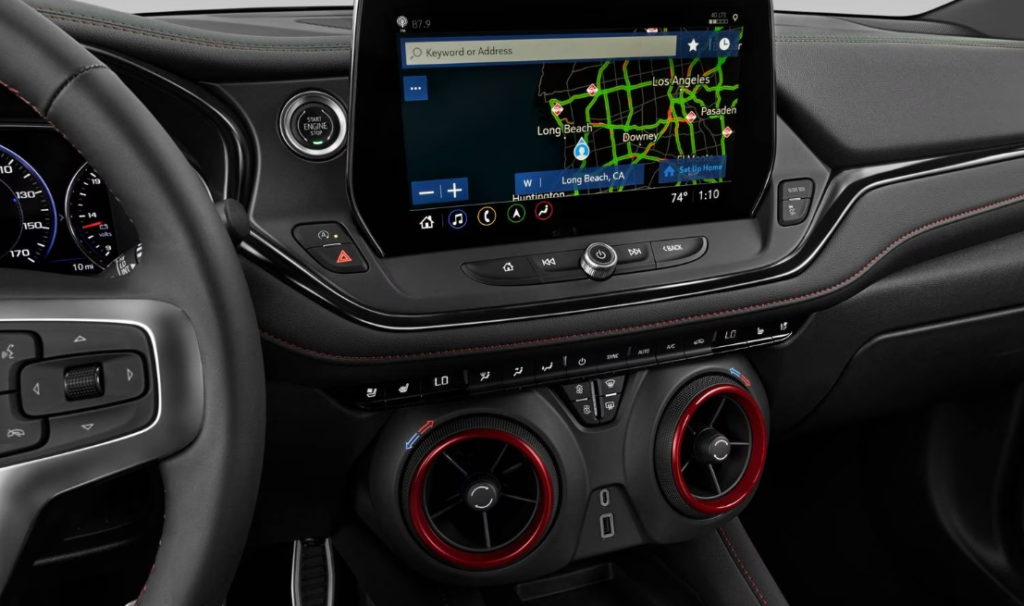
From its sleek grille to its sculpted profile, every aspect of the Blazer’s exterior is meticulously crafted to make a lasting impression.
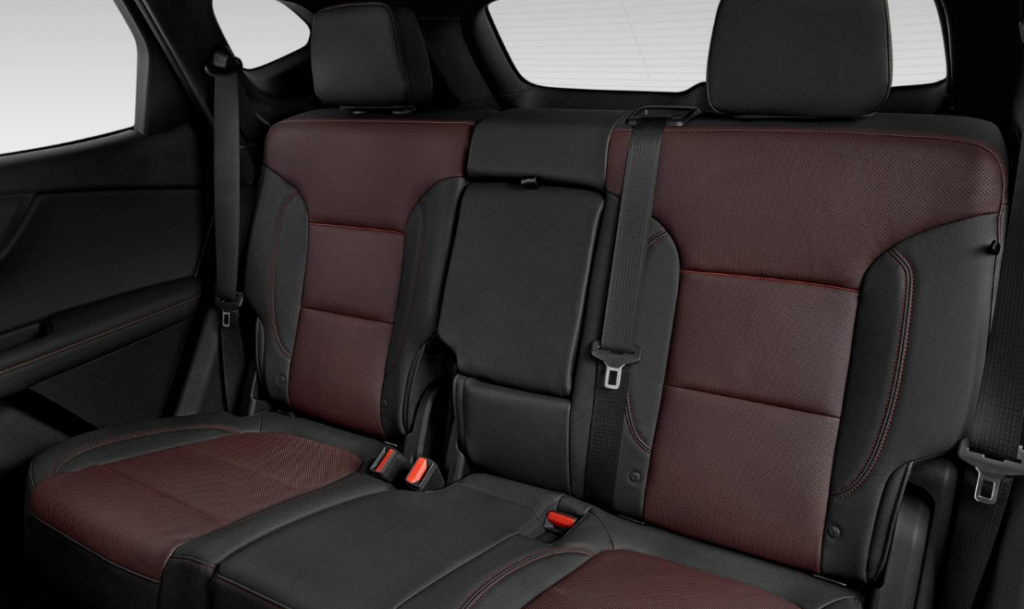
Whether navigating city streets or embarking on an off-road adventure, the Blazer commands attention with its dynamic and head-turning design, setting a new standard of style in the mid-size SUV segment.
Specifications
| Fuel Economy | City 27 mpg/Hwy 34 mpg/Comb 30 mpg |
| Fuel Type | Gas |
| Basic Warranty | 3 years or 36000 miles |
| Max Seating | 5 |
| Horsepower | 180 @ 6000 RPM |
| Cargo Space | 65.4 cu.ft. |
Dimensions, Weights & Capacities
| Curb Weight | 3291 lbs. |
| EPA Passenger | 104.0 cu.ft. |
| EPA Total Interior | 137.5 cu.ft. |
| Fuel Capacity | 14.8 gallons |
| Front Head Room | 40.0 inches |
| Front Leg Room | 42.4 inches |
| Max Seating Capacity | 5 |
| Minimum Ground Clearance | 7.5 inches |
| Overall Length | 180.1 inches |
| Front Shoulder Room | 57.6 inches |
| Towing Capacity, Maximum | 2000 lbs. |
| Trunk or Cargo Capacity | 65.4 cu.ft. |
| Turning Diameter | 38.4 feet |
| Wheel Base | 106.7 inches |
| Width with mirrors | 85.6 inches |
Fuel Economy
| City | 27 mpg |
| Highway | 34 mpg |
| Combined | 30 mpg |
Mechanical
| Drivetrain | FWD |
| Transmission Type | Automatic |
| 8 speed | Available |
| Recommended Fuel | Premium |
| Hill Start Assist | Available |
Performance
| Horsepower | 180 @ 6000 RPM |
| Torque | 199 @ 3000 rpm |
| Engine | 3-Cyl, EcoBoost, Turbo, 1.5 Liter |
Entertainment
- Premium Radio
- Satellite Radio
Seating
- Folding Rear Seat
- Cloth Seats
- Heated Seats
- Dual Power Front Seats
- Power Driver’s Seat
Technology
- Cruise Control
- Navigation System
- Remote Keyless Entry
- Proximity Sensing Keyless Entry
- Push-Button Engine Start
- Remote Engine Start
- Smartphone Interface
- Touch Screen Monitor
- Voice Recognition System
- Real-Time Traffic Information
